Introducing the MOV.AI Flow™ IDE
MOV.AI Flow™ provides a simple web-based graphic user interface in which you can design flows and program specific behaviors using a rich variety of MOV.AI and ROS nodes, as well as your own callbacks.
- To install MOV.AI Flow, see Installing MOV.AI Flow™
- To launch MOV.AI Flow, see Launching MOV.AI Flow™
- To launch a Flow, see Opening a Flow
MOV.AI Flow™ Homepage
When MOV.AI Flow is first launch it appears as follows. This page can also be displayed by clicking the Home  button.
button.
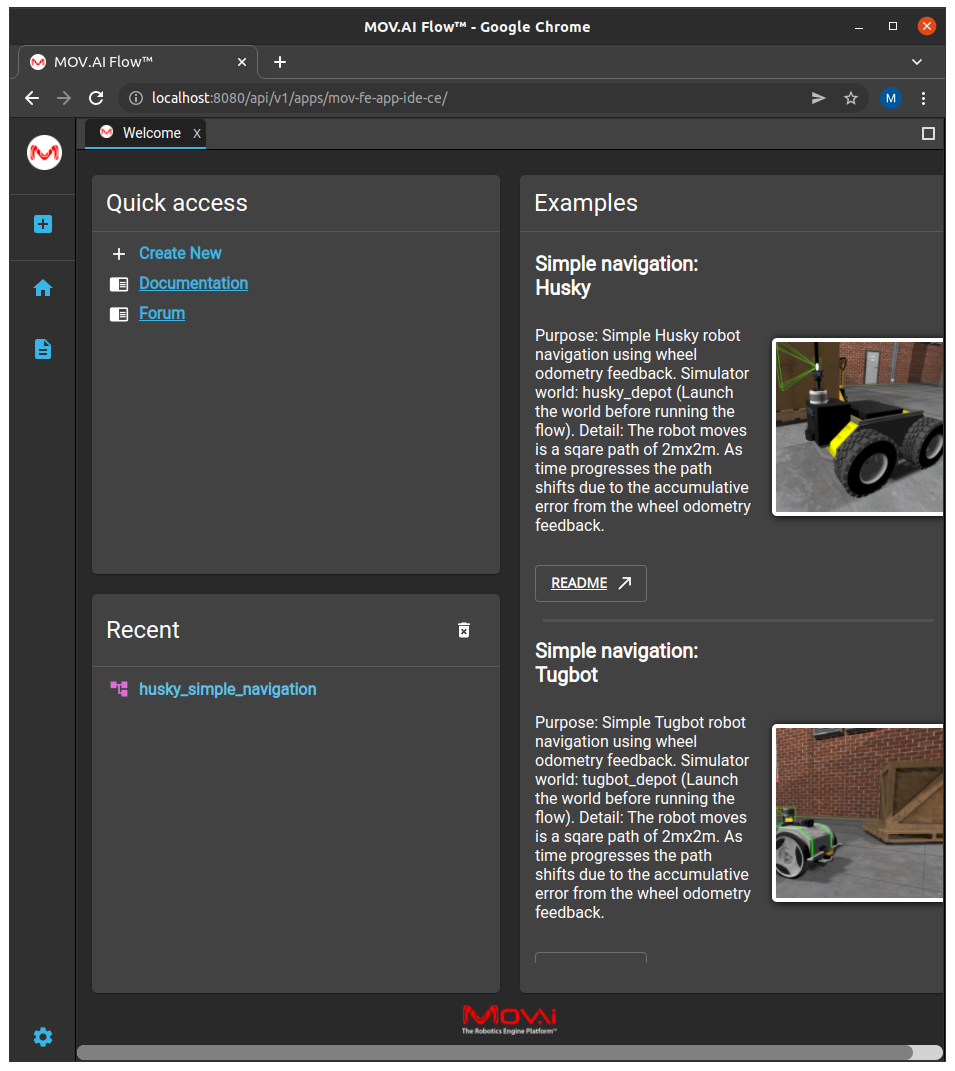
Tabs
Each window that you open in MOV.AI Flow appears as a tab at the top of the page, which you can click to open or click its X to close.

An asterisk appears on the tab if it has not been saved.
You can drag-and-drop, reposition and resize these tabs as needed on the desktop.
Quick Access
Provides quick access to the following –
+ Create New – Enables you to create a new MOV.AI flow entity – Callback, Configuration, Node or Flow.
Documentation – Displays this user guide for using MOV.AI Flow.
Forum – Accesses the ROS developers forum.
Recent
Enables quick access to the most recently opened MOV.AI Flow documents – Callbacks, Configurations, Nodes or Flows.
Examples/Samples
Provides quick access to ready-made MOV.AI flows and nodes.
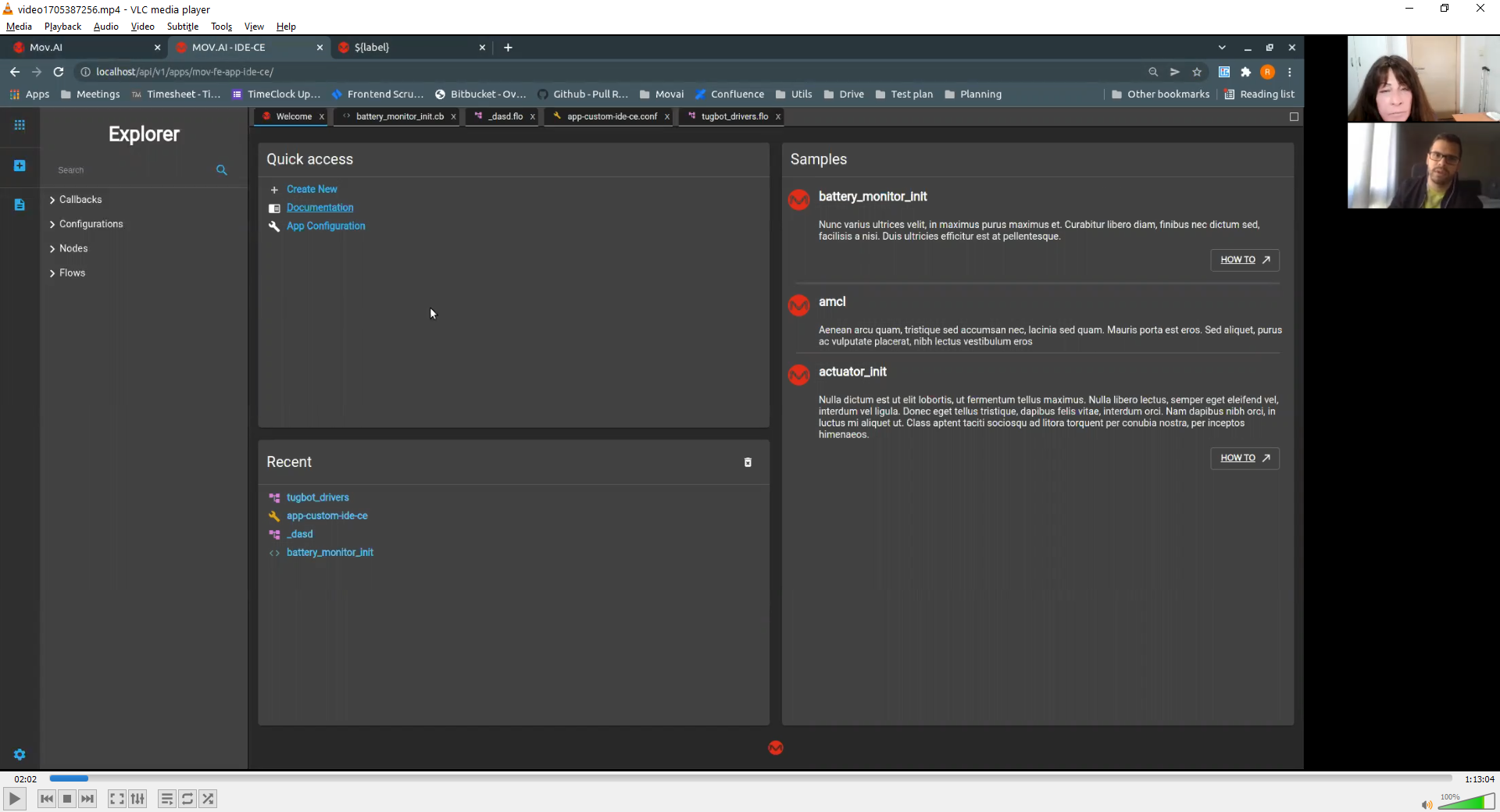
MOV.AI Flow Vertical Toolbar

The vertical toolbar in the top left of the screen provides the following buttons –
-
Explorer
 button – Displays an Explorer tree from which you can select existing Callbacks, Configurations, Nodes or Flows to include in a flow. See Explorer Pane for more information.
button – Displays an Explorer tree from which you can select existing Callbacks, Configurations, Nodes or Flows to include in a flow. See Explorer Pane for more information. -
Home
 button – Displays the MOV.AI Flow home page.
button – Displays the MOV.AI Flow home page. -
Create New Document
 button – Enables you to create new Callbacks, Configurations, Nodes or Flows.
button – Enables you to create new Callbacks, Configurations, Nodes or Flows.
Flow Diagram
The center of the MOV.AI Flow page enables you to open a flow and to see the nodes that it contains and the connections between them.

Clicking on a node in the flow displays a flow vertical toolbar which provides the following options n the top right corner of the page –
-
Add Pane
 button – Displays the Add pane, which enables you to display the full list of the nodes and flows available in MOV.AI Flow that you can use to add to a flow by dragging them into the center of the page. See Add Pane for more information.
button – Displays the Add pane, which enables you to display the full list of the nodes and flows available in MOV.AI Flow that you can use to add to a flow by dragging them into the center of the page. See Add Pane for more information. -
Properties Pane
 button – Enables you to see and modify the properties of the currently selected node in the flow. See Properties Pane for more information.
button – Enables you to see and modify the properties of the currently selected node in the flow. See Properties Pane for more information.
Explorer
The Explorer pane displays a hierarchical tree in which you edit the templates of existing Callback, Configuration, Node or Flow templates.
Click  in the top left corner of the page to display the Explorer pane.
in the top left corner of the page to display the Explorer pane.
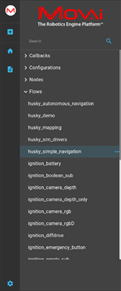
To create a new document –
-
Click the New Document
 button in the top left corner.
button in the top left corner. -
From the displayed dropdown menu, select the type of document to create.
-
Refer to the following to create each type of document –
New node and flow documents are listed in the Add pane, described below.
To edit a document –
Click on the document in the Explorer pane to display its settings.
Add Pane
The Add pane can only be displayed when a flow is open in MOV.AI Flow. The Add pane enables you to display the full list of the Nodes and Flows available in MOV.AI Flow™ that you can use to add to a flow by dragging them into the center of the page.
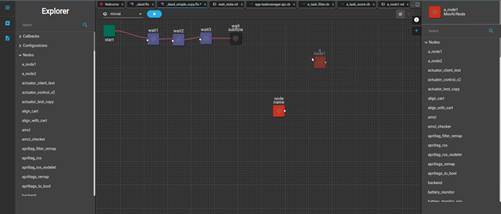
Click  in the top right corner of the page to display the Add pane.
in the top right corner of the page to display the Add pane.
Hovering over the name of a node displays a description of the node and its type in the top right corner of the page, such as whether it is a MOV.AI node or a ROS node.
Note – Nodes are created from templates you may refer to [Node Templat4s for a description of the node templates.
- MOV.AI Flow provides a rich variety of nodes from which you can select in order to define the flow that determines robot behavior. These nodes are provided as node templates, which you can instantiate into your flow by dragging and dropping them into the flow or simply clicking on them to add them to the flow.
- MOV.AI Flow also provides a variety of flows comprised of nodes which you can use as a basis to build your own robot behavior.
Properties Pane
The Properties pane can be displayed on the right of the MOV.AI Flow window by clicking the  button in order to enable you to see and modify the properties of the currently selected node in the flow.
button in order to enable you to see and modify the properties of the currently selected node in the flow.
To display/edit the properties of a node selected in a flow –
-
Open a flow (for example the Simple Navigation: Husky demo).
-
Click on the
 button on the top right of the flow diagram to expand the Properties pane of this flow on the right.
button on the top right of the flow diagram to expand the Properties pane of this flow on the right. -
Change parameters as needed. For example, you can click on the move distance node to display its properties in the right pane, as shown below –
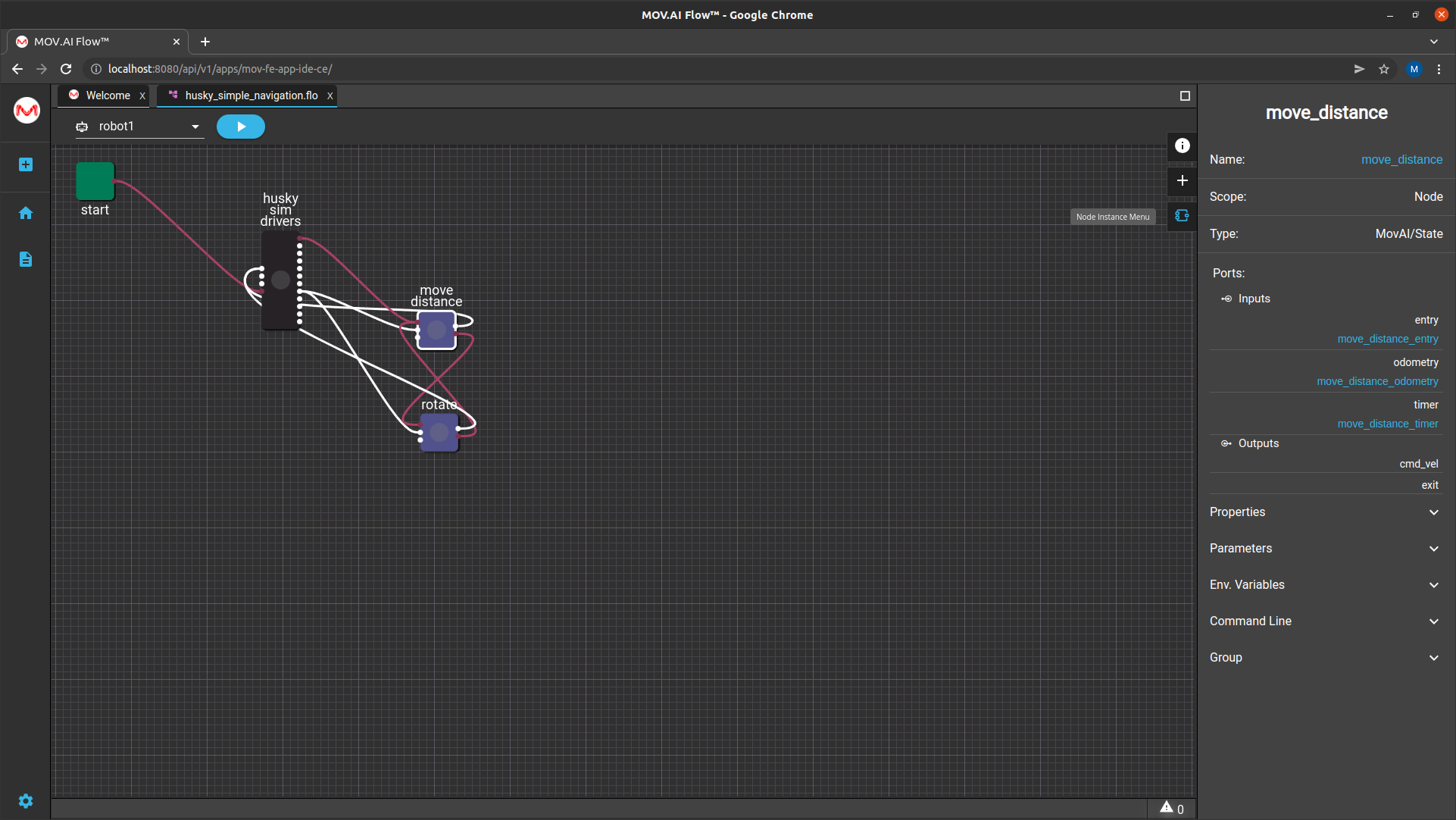
- Click on Parameters to expand it to show all the customizable parameters provided for this node. For example, as shown below –

- You may refer to Customizing Flow Behavior for more information.
Organizing Your Desktop
You can organize your desktop by moving the MOV.AI window to the side and clicking theCollapse  button in the Explorer pane so that it takes up less space, as follows –
button in the Explorer pane so that it takes up less space, as follows –
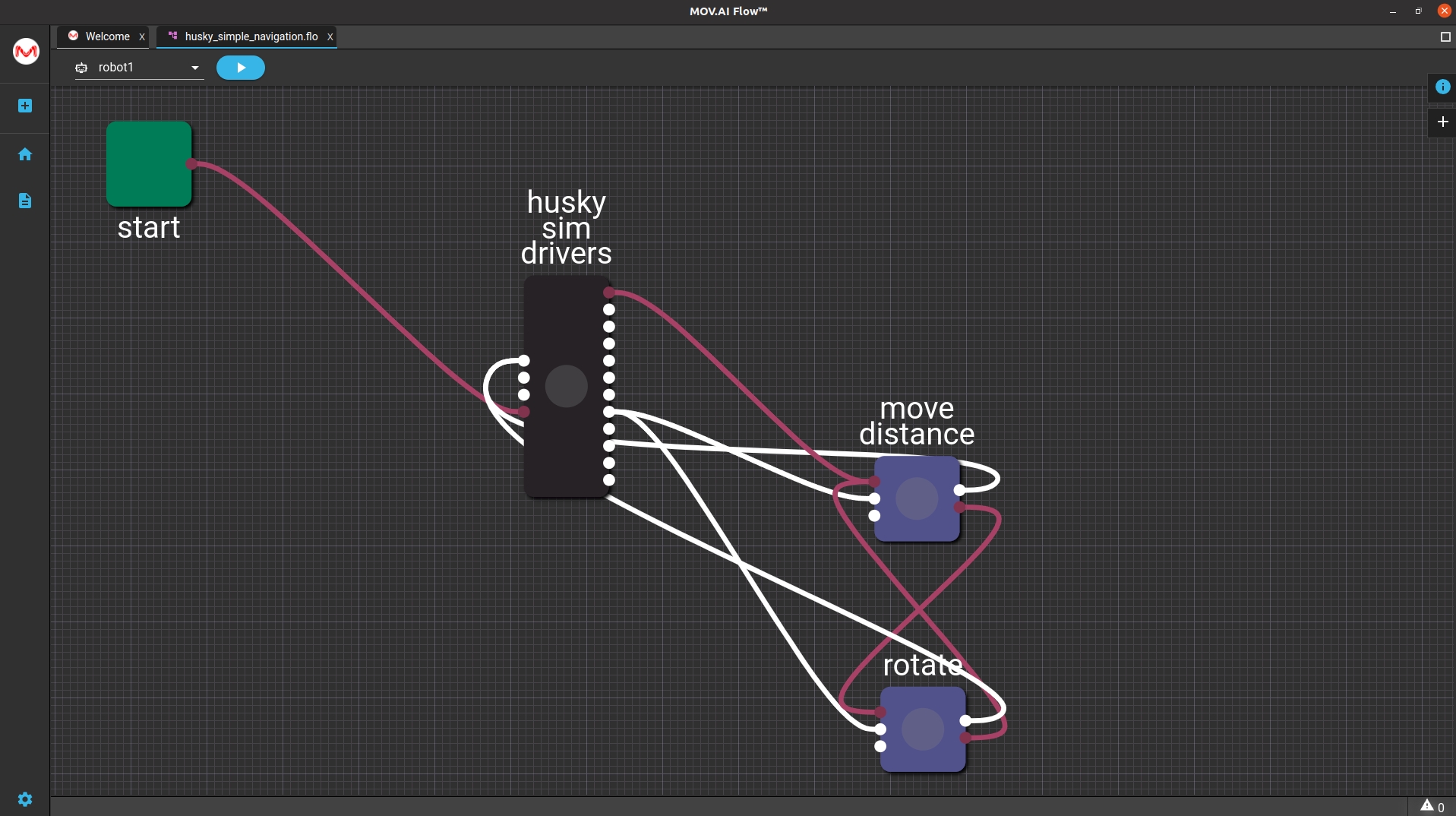
Updated 8 months ago
